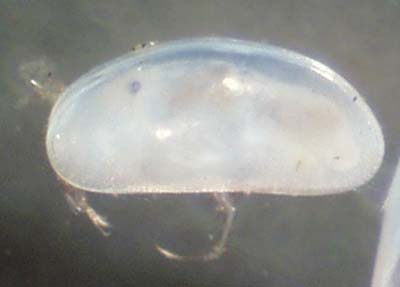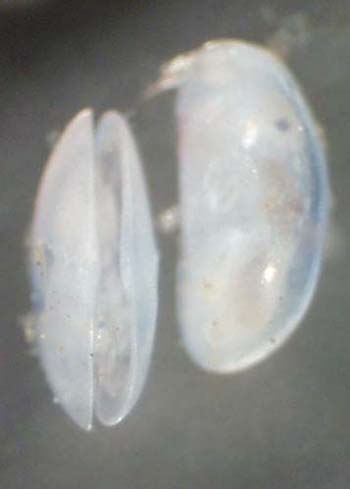
THE XERCES SOCIETY FOR INVERTEBRATE CONSERVATION Aquatic Invertebrates in Pacific Northwest Freshwater Wetlands |
| Identify taxa |
Ostracoda (seed shrimp) |
Ostracods are found just about everywhere water is found, both fresh and saltwater, moving or still, pristine or heavily degraded. They are both abundant and distinctive, though they haven't received a lot of attention from scientists. Their most unique feature is their bivalve shell. It's not the same kind of shell that you might think of for a clam or a mussel, but functions in much the same way. You might think of them as a crab whose shell (carapace) has grown in two halves out from the top and down the left and right sides, front and back, to surround and protect its body and all its legs. Then imagine that those two shells are connected along the top by a rubber band. They also have 7 pairs of appendages and two major body sections (though the legs and body may be difficult to see because of their small size). The only other bivalve crustaceans are the clam shrimp, which are larger, have more and better defined body segments, and have more and better defined appendages. Ostracoda in the family Candoniidae were collected in a study of wetlands in Oregon. |
Size: xsmall to small Identifying feature(s): small clam-like crustacean Habitat: wetlands; diverse fresh waters Tolerance to pollutants: tolerant |
© 2007 Xerces Society
Contact info@xerces.org


